James Hargreaves was an English weaver, carpenter and inventor who lived and worked in Lancashire, England. He was one of three men responsible for the mechanisation of spinning: Hargreaves is credited with inventing the spinning jenny in 1764; Richard Arkwright patented the water frame in 1769; and Samuel Crompton combined the two, creating the spinning mule in 1779.
Constance was Duchess of Brittany from 1166 to her death in 1201 and Countess of Richmond from 1171 to 1201. Constance was the daughter of Duke Conan IV by his wife, Margaret of Huntingdon, a sister of the Scottish kings Malcolm IV and William I.

William de Burgh ; c.1160–winter 1205/06) was the founder of the House of Burgh in Ireland and elder brother of Hubert de Burgh, 1st Earl of Kent and Geoffrey de Burgh, Bishop of Ely.
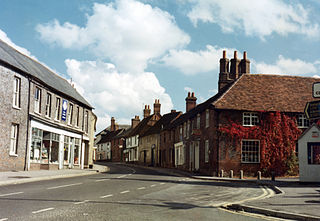
Kingsclere is a large village and civil parish in Hampshire, England.
Major General Sir Charles Armand Powlett, KB, of Leadwell, Oxfordshire, was a British Army officer and Whig politician who sat in the House of Commons between 1729 and 1751.
Lord William Powlett was an English Member of Parliament.
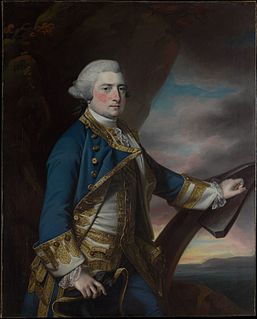
Admiral Harry Powlett, 6th Duke of Bolton PC was a British nobleman and naval officer.
Henry William-Powlett, 3rd Baron Bayning, styled The Honourable until 1823, was a British peer and clergyman.
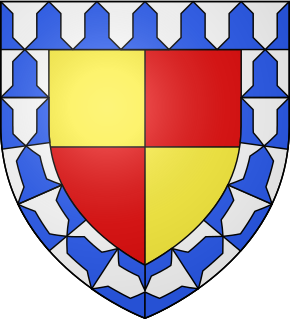
John FitzGeoffrey, Lord of Shere and Justiciar of Ireland was an English nobleman and Crown official.
Walter Fitz Robert of Woodham Walter (c.1124–1198), lord of Little Dunmow, Essex, was steward under Stephen of England, having succeeded to that position upon the death of his father, Robert Fitz Richard. Walter died in 1198 and was buried at Little Dunmow, in the choir of the priory of Austin canons.
Peter de Valognes (1045-1110) was a Norman noble who became a great landowner in England following the Norman Conquest.
Roger de Valognes was an Anglo-Norman nobleman who held lands around Benington in Hertfordshire.
Burchard du Puiset was a medieval Anglo-Norman clergyman and treasurer of the diocese of York. Either the nephew or son of Hugh du Puiset, the Bishop of Durham, Burchard held a number of offices in the dioceses of York and Durham before being appointed treasurer by King Richard I of England in 1189. His appointment was opposed by the newly appointed Archbishop Geoffrey, which led to a long dispute between Geoffrey and Burchard that was not resolved until the mid 1190s. After the death of Hugh du Puiset, Burchard was a candidate for the Hugh's old bishopric, but lost out in the end to another candidate. Burchard died in 1196.
Andrew III of Vitré was Baron de Vitré from 1173 to 1210/11.

de Valognes is a family name of two distinct powerful families with notable descendants in the centuries immediately following the Norman Conquest. Although a connection between them has been inferred by some authorities, this is not supported by positive evidence.

Anne Vaughan, Duchess of Bolton, formerly Lady Anne Vaughan, was the wife of Charles Powlett, 3rd Duke of Bolton. Although her married name was Powlett, she is generally known by her maiden name of Vaughan, under which name she was a signatory to Thomas Coram's petition of 1729, which led to the foundation of the Foundling Hospital.
David Comyn, Lord of Kilbride was a son of William Comyn, Lord of Badenoch later the Earl of Buchan and inherited the barony of Kilbride from his wife Isobel, the daughter of William de Valognes. He died in 1247.
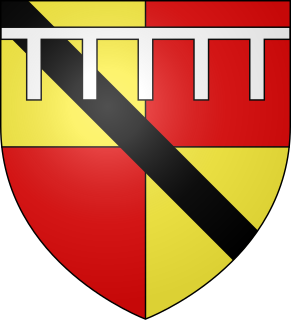
John fitz Richard was an Anglo-Norman soldier, Baron of Halton and hereditary Constable of Chester. Historical records refer to him as "John, Constable of Chester". He died at Acre in the Holy Land.
William Powlett, of Chilbolton and Easton, Hampshire, was a British landowner and Whig politician who sat in the House of Commons between 1729 and 1757.
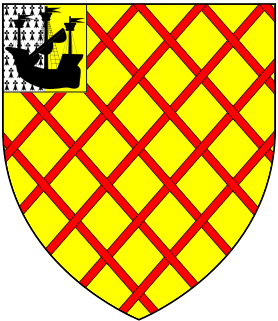
Geoffrey de Neville was the 2nd feudal baron of Ashby in Lincolnshire.








